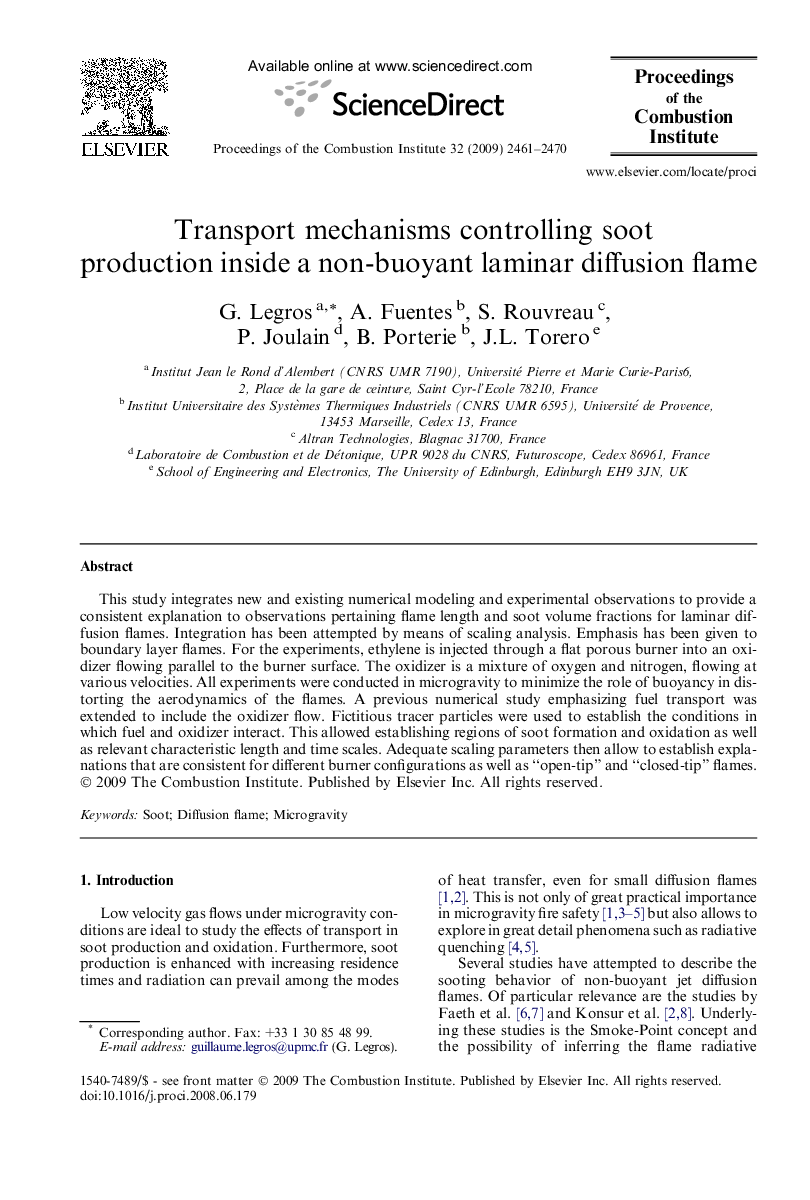| Article ID | Journal | Published Year | Pages | File Type |
|---|---|---|---|---|
| 241107 | Proceedings of the Combustion Institute | 2009 | 10 Pages |
This study integrates new and existing numerical modeling and experimental observations to provide a consistent explanation to observations pertaining flame length and soot volume fractions for laminar diffusion flames. Integration has been attempted by means of scaling analysis. Emphasis has been given to boundary layer flames. For the experiments, ethylene is injected through a flat porous burner into an oxidizer flowing parallel to the burner surface. The oxidizer is a mixture of oxygen and nitrogen, flowing at various velocities. All experiments were conducted in microgravity to minimize the role of buoyancy in distorting the aerodynamics of the flames. A previous numerical study emphasizing fuel transport was extended to include the oxidizer flow. Fictitious tracer particles were used to establish the conditions in which fuel and oxidizer interact. This allowed establishing regions of soot formation and oxidation as well as relevant characteristic length and time scales. Adequate scaling parameters then allow to establish explanations that are consistent for different burner configurations as well as “open-tip” and “closed-tip” flames.
